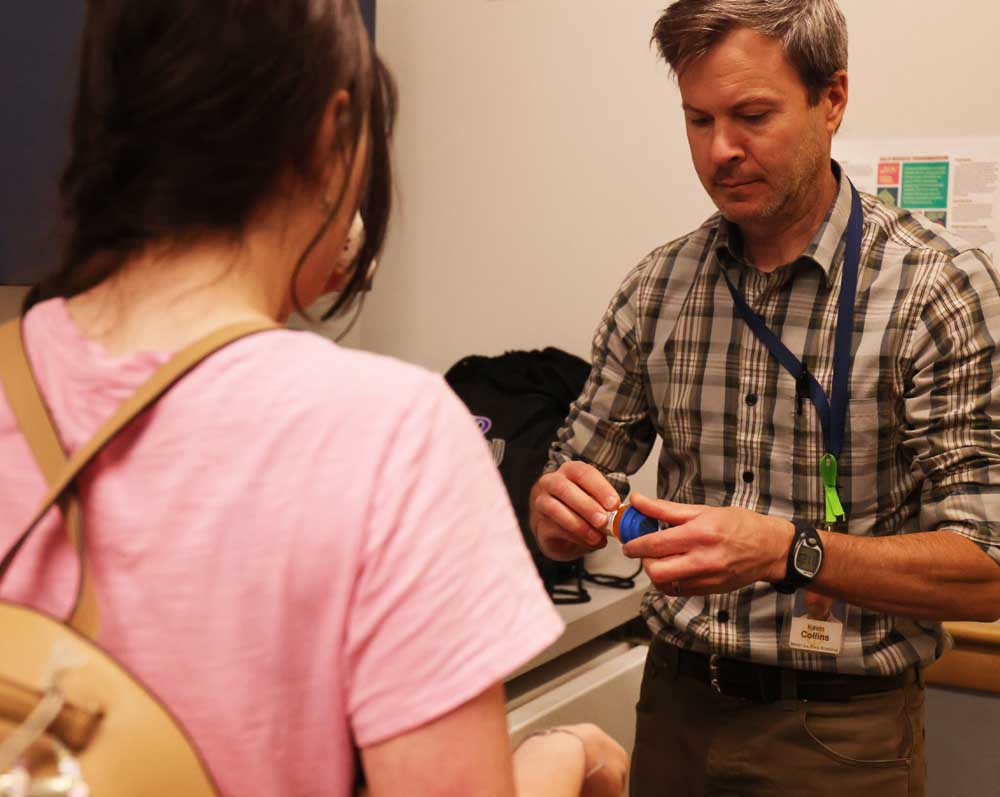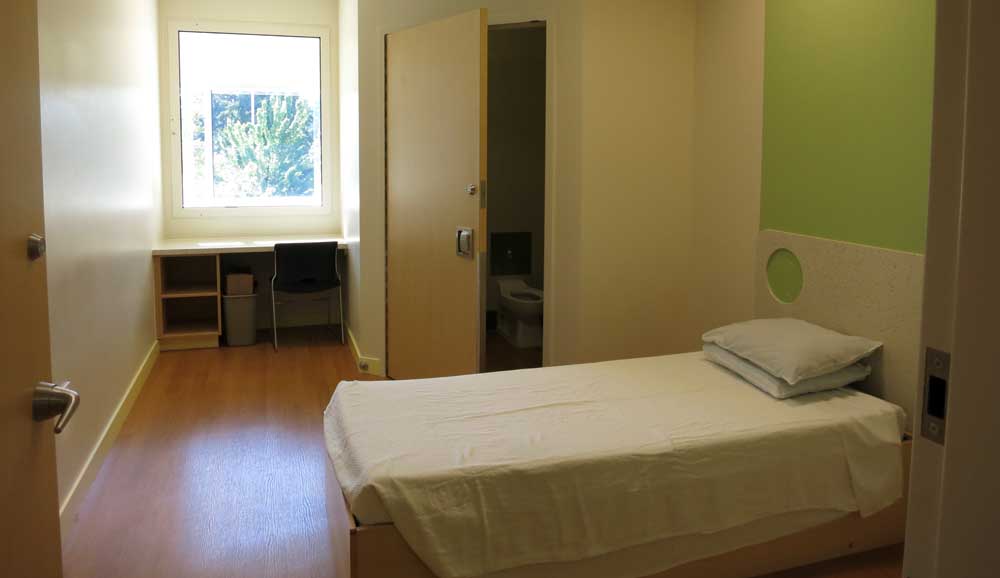More than first aid: Bend-La Pine Schools nurses handle student health
Published 5:45 am Saturday, June 22, 2024

- Bend-La Pine school nurse Kevin Collins distributes prescribed daily medication to a student at High Desert Middle School in Bend on Tuesday.
Every year, Hannah Steiner forgets how difficult the end of the school year can be.
She remembers the time after spring break as the home stretch, but there are still concussions, bee stings and other outdoor injuries she tends to as a nurse for Bend-La Pine Schools.
Trending
Nurses have to be flexible and able to shift priorities quickly. Keeping kids in school is the most important one, however.
“The longer I work at this job, the more I realize how important school nursing is,” said Steiner, who just finished her 11th year with the district. “We are an integral part of the school, the school safety, keeping kids in school, bridging the gap between medical needs of kids and the learning environment of kids.”
Bend-La Pine Schools has 20 to 25 nurses, with most splitting their time between two or more schools. Nurses serve as the first defense for school health, keeping one eye on community health and the other on students’ day-to-day medical needs, which range from medications to emergencies.
From injuries to individual education plans
Once she began adding it up, Steiner was surprised at how much she handles as a nurse. Between managing student health plans, daily injuries, medications and staff training, there’s a lot to do. This past school year, Steiner, 46, split her time between High Lakes Elementary School and Cascade Middle School.
The first thing for a nurse to figure out is whether a student at one school needs acute care, such as a Type 1 diabetic or a student who needs tube feeding. New students and changing health can flip things on a dime.
Trending
Steiner and other nurses focus a lot of their energy on staff training, because they aren’t at one school all the time and might need staff to pitch in with an emergency while they provide help over the phone.
“It can range from anything like a student with a seizure to a student with migraines,” Steiner said.
At the beginning of the year, nurses spend time creating health plans with parents and doctors to figure out what to do if students come in complaining of certain symptoms or have an allergic reaction. Similarly, at the end of the year, nurses focus on keeping up to date with the students who are transitioning from one school to another.
Some students have disabilities or medical complexities that need nurses to be nearby. If a school has a larger life skills program for such students, the nurse is likely to spend more time at that school. Nurses involve multiple staff if necessary, including for students who need help being fed or have specific accommodations for medical conditions.
Nurses might be the first person to notice an issue and provide care, especially for families who don’t have a health care provider, said nurse Kevin Collins, 48, who works at High Desert Middle School and Bend Tech Academy. Collins just wrapped up his ninth year as a nurse.
“The biggest impact we can have is helping to lower the barriers to keep kids in school,” said Collins. “We’re also part of surveillance for public health. When it comes to outbreaks, we are the people in the schools who are going to recognize that first.”
Connecting with parents allows nurses to help manage behaviors at both school and home, and figure out when to get help from doctors. Steiner and Collins both stressed that nurses are there to help.
“We often hear that people don’t really know what the school nurses do,” said Steiner. “We are quiet, behind-the-scenes professionals. I’ve realized absolutely how important it is to have them in school.”
Getting into nursing
Collins worked as a rafting guide in his 20s before moving to Central Oregon and having a family. He then decided to go back to school at Central Oregon Community College.
“I was still interested in medicine, maybe a different modality, like Chinese medicine or something,” he said. “I decided that was gonna require a family move and that wasn’t feasible so (began) learning about COCC and they have a very good reputation in their nursing program.”
He received his degree and worked for St. Charles Health System before joining the school district. His wife is a teacher, which meant their family could be on the same schedule.
Steiner was a nurse for around a decade before getting her teaching license. She eventually found her way to Bend-La Pine Schools as a nurse, which ended up being a perfect blend of education and health. Steiner started at the district on a part-time basis before jumping at a full-time nursing job when one opened up.
They both said they had more of an interest in community health over clinical health.
“Out of all the spectrum of nursing you could do, I always gravitated towards the wellness side of things,” said Steiner.
Not enough staff
Despite being the fifth-largest district in Oregon, Bend-La Pine Schools has a relatively small nursing staff. Each high school has a full-time nurse, while elementary and middle schools share nurses. Substitute nurses also help when necessary.
“I’m sure we’re not alone when we say we would love more staffing,” said Steiner. “Everybody on the team has had to pick up an extra school or a random assignment here and there.”
Both Steiner and Collins have worked in six different schools since they started with the district.
“We don’t have enough substitute nurses, so we kind of have to fill in for each other,” said Collins. “(Last year) I covered Caldera when there wasn’t a substitute there and the nurse assigned to Caldera was out.”
Every year is different, however. Some years there are a lot of substitutes, and other years there aren’t and regular nurses have to fill in.
“In a dream situation, it’d be great to have one nurse in every building,” said Steiner. “I would love to see what that model is like, because I do know from personal experience that the more I’m in the building, the better job I’m doing, the better everything is working as the system that we want it to be.”
More child care providers in Central Oregon allow parents to return to work








